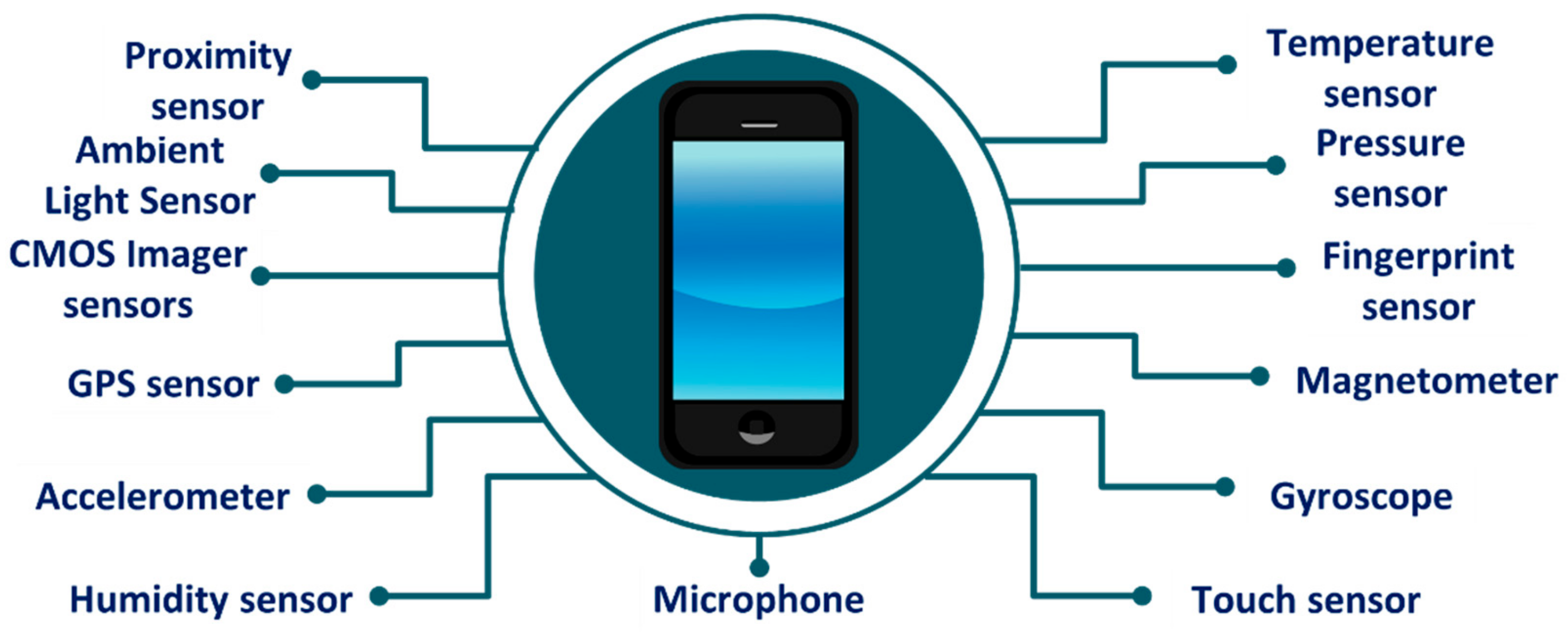...
This project is a smartphone sensor data analytics project that deals with a full set of heterogeneous datasets to be correlated with mood analysis and mental health. The acquired data includes periodically-prompted user survey entries, light sensor output, Bluetooth and WiFi status, GPS data, and multivariate IMU time series e.g. 3-axis accelerometer and 3-axis gyroscope output at simple and complex activity contexts.
Background/History
A large number of subjects have signed up for this study The Warfighter Analytics using Smart Phones for Health (WASH) program recruited 25,000 participants across the United States to download and run a smartphone app (newly designed cell phone app named Health & Injury Prediction and Prevention Over Complex Reasoning and Analytic Techniques Integrated on a Cell Phone App (HIPPOCRATIC App) (Android and iOS) on their personal devices and allow specific and partially-prompted data acquisition that ranges from their answers to survey question to sensor data recording at various activity contexts.
...
This project aims to make use of our smart devices to capture essential health-related data, analyze it, and provide the community with open-source tools for mental health diagnostics in specific, and human health in general.
Additional analysis will be done to report compliance and retention rates to describe the quantity of survey data collected and to provide an indication of the quality of the data collection procedures as well as to examine factors that may influence compliance and retention rates.
Benefits
This project will set standards in smartphone sensor big data processing and analysis, and it will provide analytical tools for the correlation of human activity with mood and mental health.
...
Once developed and implemented, the tools and analytical pipelines generated by this project may be embedded on edge-devices (e.g. smartphones, smart watches, microcontroller-based systems) for online mental health assessment, or linked to the healthcare facility's network for advanced EHR, or even on the cloud so that medical providers can monitor and diagnose treatment effectiveness over the web.
The influence of participant behavior and demographic-related factors on the compliance and retention rates of mobile technologies enabled digital health studies remains largely unexplored in the research literature. The compliance study portion of this project fills this gap to provide empirically-based strategies that could support researchers’ choices in designing data collection protocols for future studies.
How
This project will be carried out as a series of processes: ETL → EDA → QA/QC → ML/AI model engineering → MLOps pipeline integration
To achieve the desired outcomes, advanced unsupervised analysis and anomaly detection algorithms will be implemented for QA/QC, machine learning (shallow and deep) models will be built, tested and tuned for optimal performance, and operation pipelines will be developed for system automation, optimization, and integration.
The compliance study will examine cohort characteristics and its association with compliance and retention rates. Metrics to assess retention rates may include duration in the study, longitudinal participant engagement (user activity streak), and number of times participants reached out to the research team for tech/payment/survey-related issues (data stored in REDCap). Metrics to assess compliance may include number of surveys completed over the total number of available surveys that could be completed by participants’ unique study time and number of Audio and simple & complex activity context survey completed.
Further reading
Any papers or article that I can use to understand better
...
